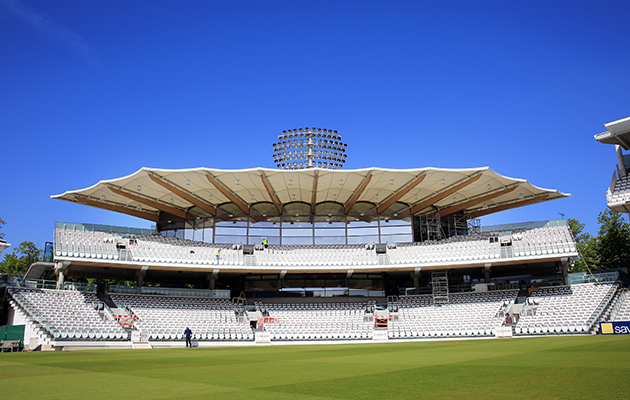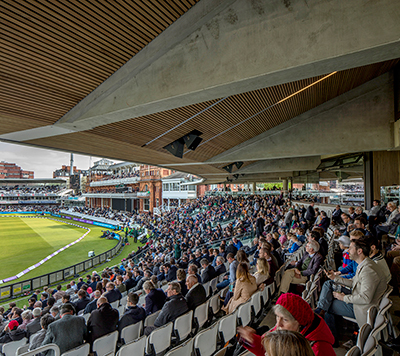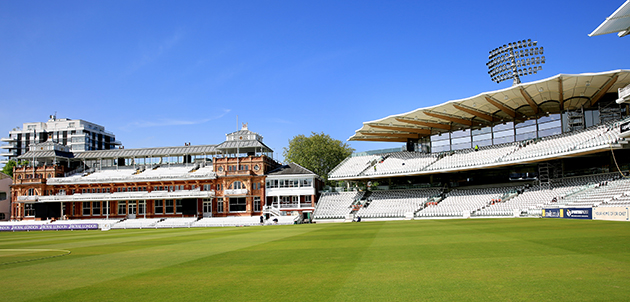|
|
||
|
Populous’s new structure for the MCC is technologically accomplished but feels like a missed opportunity Lord’s Cricket Ground, adjacent to London’s Regent Park, claims to be the home of cricket and, from what I gather, is the closest equivalent to a hallowed ground for cricket enthusiasts. For the uninitiated, Lord’s is a great, immaculately trimmed lawn, with the faintest wear in its midst, and despite our modern expectations, it is not entirely level, but instead slopes gently to the south. Around it, a contiguous collection of structures, two of which are of exceptional merit. The first of these is the historic Victorian Pavilion built in 1890 and clad in ornate terracotta panelling, which occupies the ground’s west end. It is now reserved for the members of Marylebone Cricket Club, which owns the grounds. Future System’s RIBA award-winning Media Centre from 1998, a smooth, squashed aluminium bauble, faces it head on from the east. In between these is a motley collection of more-or-less functional grandstands, which collectively provide seating for up to 28,000 spectators. In 2013, the sports venue specialist Populous unveiled a masterplan to increase the ground’s capacity to 32,000 and upgrade its facilities.
Tucked into the north-western corner and adjacent to the Victorian Pavilion, the new Warner stand designed by Populous is the first piece of this planned redevelopment, replacing an earlier structure from 1958. Although the original plan called for an increased capacity, from 2,800 seats to 2,900, the finished structure can accommodate ‘only’ 2,656 spectators and is primarily dedicated to the members of MCC. On the day of the press view, this was somewhat skated over, laying the emphasis on the fact that the number of seats with restricted view has been reduced from about 600 to a mere 100, and the members will have above average legroom. But there were other, more unambiguous achievements as well – the top floor of the structure is reserved for a 100 seat restaurant, the lower level contains a match control room and two new bars – which have up until now been placed alongside the perimeter of the stands on ground level – have been included up inside the stand itself.
|
Words Peter Smisek |
|
|
|
||
|
At first, it might seem strange to point out features that have long become standard in large sports stadiums as exceptional, except they definitely are at Lord’s, for three reasons. First, the stands come from different era, when such facilities simply lined the outer perimeter, and as a result of growing capacity, spectators had to wait an average 22 minutes to get their Pimm’s. Second, in England, cricket is seen as the preserve of the white, middle-aged, middle-class male, a conservative demographic if there ever was one, so any novelty is newsworthy in and of itself. Third, Populous managed to integrate an extensive programme within a compact site and without looming over the Pavilion. There are also triumphs of technology: the cantilevered beams made from laminated white oak are the longest in the country, and possibly Europe, the translucent fabric air cushions are lined with 16mm of aerogel. The roof is green, the top of the glass enclosure of the restaurant slides down so that patrons can watch the game and hear the supposedly typical Lord’s hum. The stand fulfils the latest disability access requirements, there are numerous green features such as a green roof, bird boxes and ground source heating and cooling.
Yet for all its credentials, the Warner stand lacks a certain finesse. There are structural gymnastics galore – the building’s grid shifts three times to accommodate the various seating arrangements on its two tiers and supporting the airy canopy – but the edges and balustrades that face the green are faceted where they could have been curved. There might be a point in making most sports venues vandal proof, but with the average age of Marylebone’s Cricket Club members hovering around 60, as well as cricket’s polite image, the standardised banality of the detailing of the circulation spaces and blandness of the bars is an opportunity missed. Yes, Populous has proven it can weave a complex, additional programme into a compact building envelope, and of course it lives up to its reputation as a sports venue specialist, but in this case, a better interior architect would have helped inject the space with a bit more refinement. It’s certainly commendable, but not quite great. |
||
 |
||



















